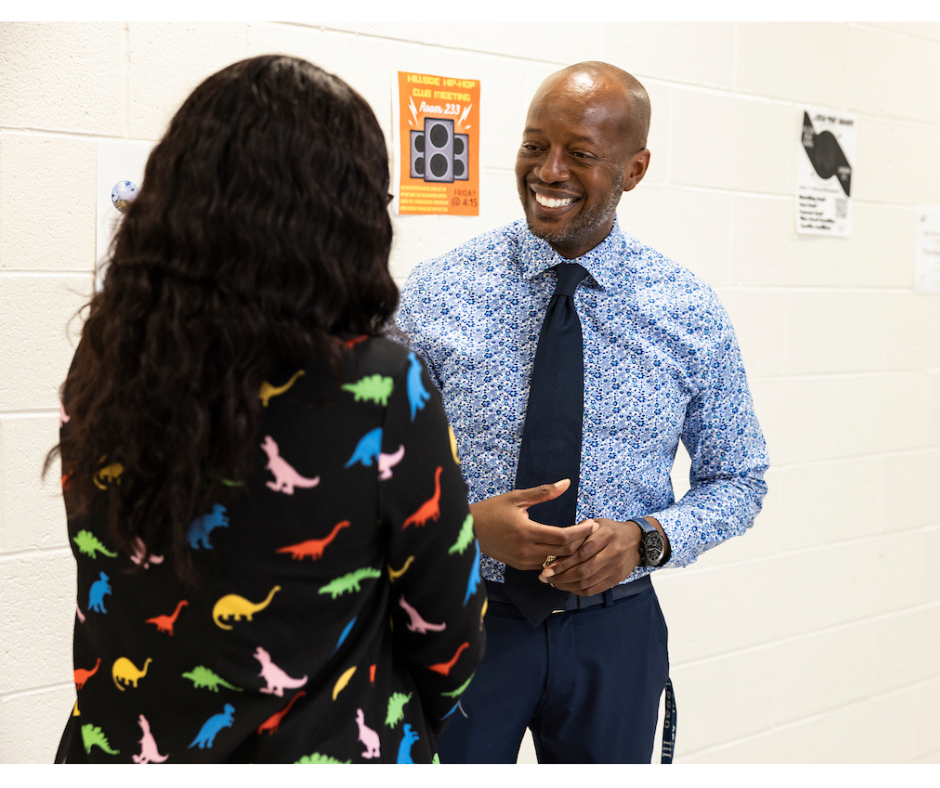
By LaMicah Lindsey
Families and communities are invaluable partners in education. They have insights, skills, and other resources that can help students learn and grow. Research shows that when school districts collaborate with families and communities authentically – when communication is open, points of view are respected, practices are equitable, and decision making is shared – trust between schools and families grows and graduation rates rise. However, amid political upheaval, funding challenges, chronic teacher shortages, and low teacher pay, strengthening family and community collaboration (FCC) is a struggle for many districts.
Recently, our Connected & Engaged initiative developed a series of four policy briefs that offer research-based solutions in four areas where there are barriers to authentic FCC: equitable funding, educator workforce, translating research into practice, and school governance. As with other education issues, many FCC solutions require legislative or policy changes by the federal, state, or local government. Changes at those levels are critical, but they can take a long time to become reality.
The good news is that districts don’t have to wait for change. Here are a few recommendations – based on our policy briefs – for steps district leaders can take on their own to strengthen FCC:
- Combine existing funding streams to support FCC: To maximize FCC funds, districts can look for ways FCC activities can work in conjunction with initiatives that are already funded. If federal, state, and grant dollars are intertwined to support FCC, districts will be better able to cover educators’ time, support communication with families, and offer incentives for FCC activities. For example, Tuscaloosa City Schools in Alabama strategizes to combine federal, state, and local funding sources to cover its FCC costs.
- Provide professional development sessions on student loan forgiveness: When educators face less financial pressure, they’re better able to do their jobs, including the relationship building that FCC requires. To help educators reduce student loan debt, districts and professional development (PD) offices can use resources from the Federal Student Aid site to provide PD sessions on federal, state, and local loan forgiveness programs. These sessions should include local district and university representatives who can discuss local loan forgiveness options. Increasing awareness of loan forgiveness programs for teachers also can make the profession more appealing to prospective teachers, which over time can increase the number of teachers available to work with families and communities.
- Work with families to put research into practice: When caregivers have a solid foundation in FCC research, they’re better able to help design evidence-based FCC initiatives that truly meet their students’ needs. Districts can share FCC research with caregivers and involve them in deciding how to best integrate the findings into district practices. Moreno Valley School district in California does this by training parent ambassadors in district policies to support school-based teams of caregivers and teachers on integrating research into FCC efforts.
- Review district policies and procedures: Caregivers often face challenges to becoming fully engaged partners with districts. Some work one or more jobs and don’t have the time or flexibility to participate. Some don’t have transportation or an Internet connection. Others face language or cultural barriers. To help address these issues, districts can conduct internal and external reviews of their policies and procedures to make sure they are equitable and provide opportunities for all families to participate, especially families from marginalized communities. In Ohio, the Cleveland Heights-University Heights City School District invites both families and community members to serve on citizen-led task forces to support its strategic growth areas. The district uses equitable outreach strategies – such as advertising broadly, in multiple languages and formats – to make sure the task forces are open to all families and community members.
We know that partnering with families and communities is a powerful way for districts to better serve their students. With these research-based recommendations, districts can act now to strengthen FCC and help students thrive.
Photo by: Jessica Scranton
